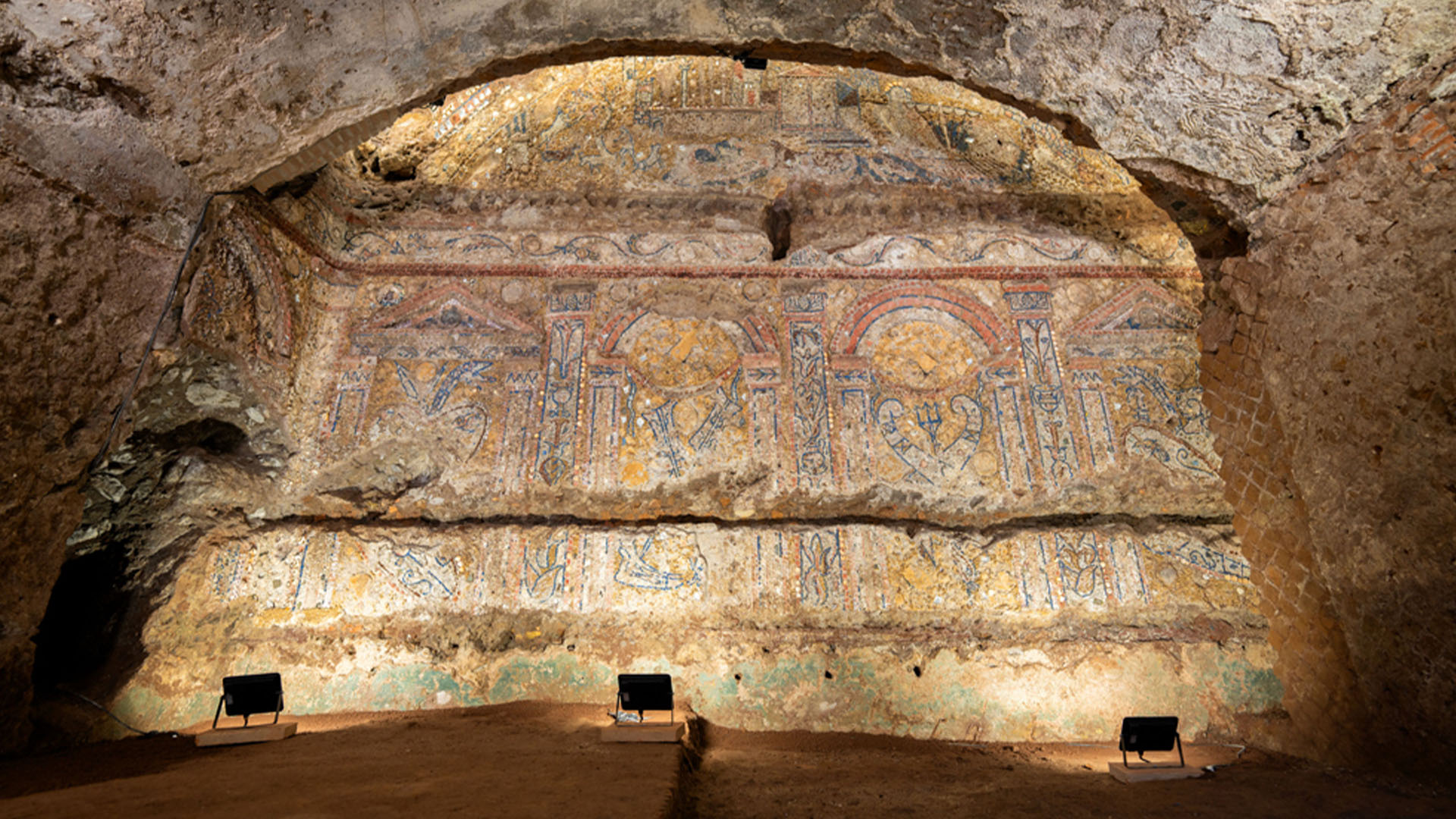
Archaeologists in Rome have unearthed an ornate banquet hall decorated with a brightly colored wall mosaic. The stunning room was part of an aristocratic house built around 2,300 years ago on the city's Palatine Hill.
The luxurious abode is located just a few hundred feet south of the city's central forum — the ancient market traditionally regarded as the heart of Rome that was lined with major temples and government buildings. Archaeologists think the house belonged to the aristocratic family of a Roman senator who may have led troops in battle.
The intricate mosaic features complex scenes depicted with fragments of seashells, stones of the pigment Egyptian blue, pieces of glass and flakes of colored marble and other stones, in a style known as "rustico" (rustic or rural), according to a translated statement.
"[The mosaic] is truly exceptional," Alfonsina Russo, the director of Rome's Colosseum Archaeological Park, said in a translated video describing the find. "This is something new that inspires us to learn more and more about the part of the Palatine, which is a place of great importance for the history of Rome."
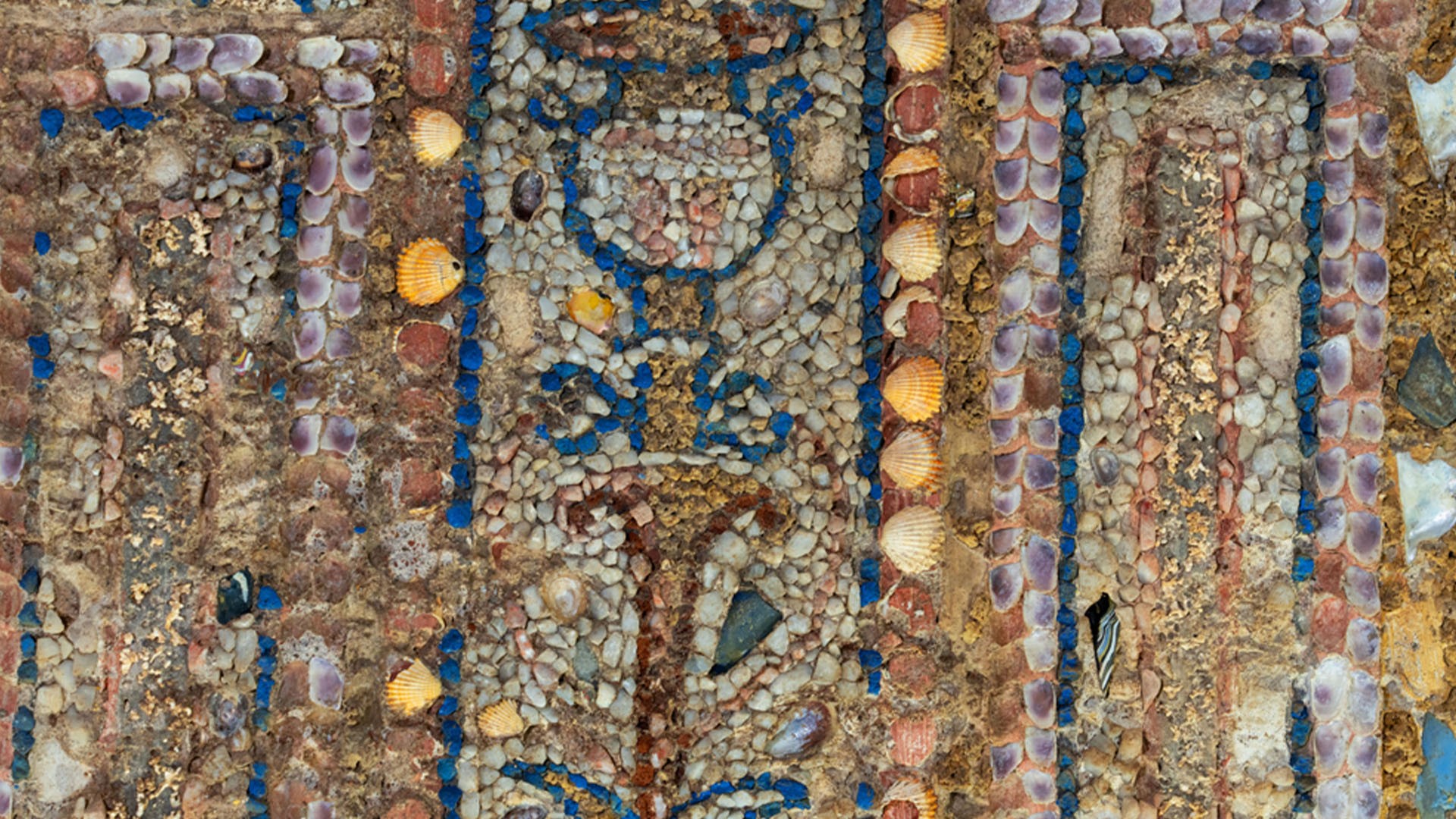
Russo noted that the banquet hall and mosaic were discovered during a five-year dig of the area, where the famous grain-storing warehouses of the Horrea Agrippiana were built by Marcus Vipsanius Agrippa, the friend and son-in-law of the first Roman emperor Augustus. (Augustus himself and several later emperors also had large houses on the Palatine, which is the origin of the English word "palace.")
Related: Ruins of ancient Roman emperor Nero's theater unearthed in 'exceptional' discovery in Rome
Roman banquet
Agrippa ordered the warehouses built in 33 B.C. when he was elected aedile of the city — a magisterial post then given to whomever Augustus chose.
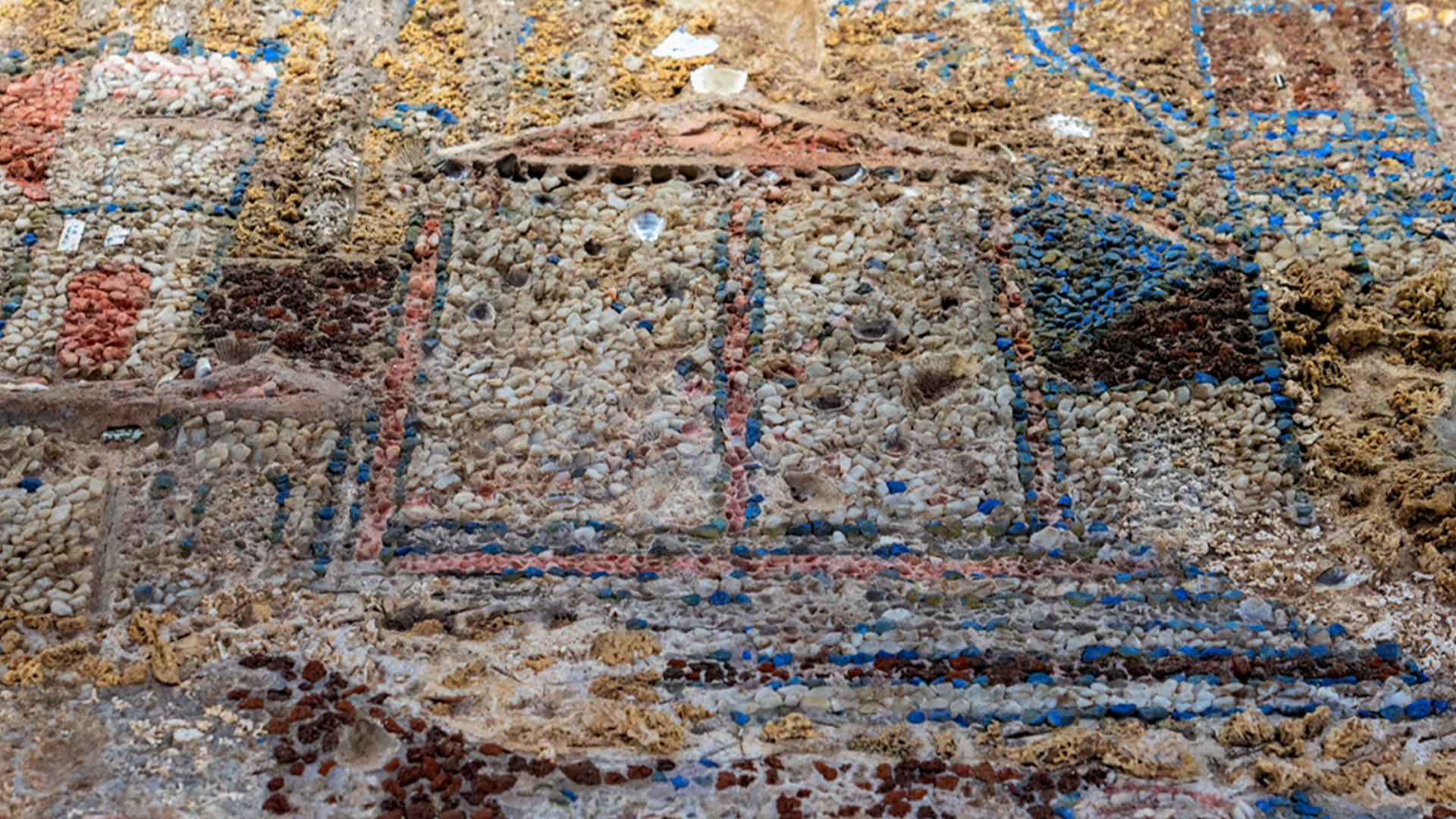
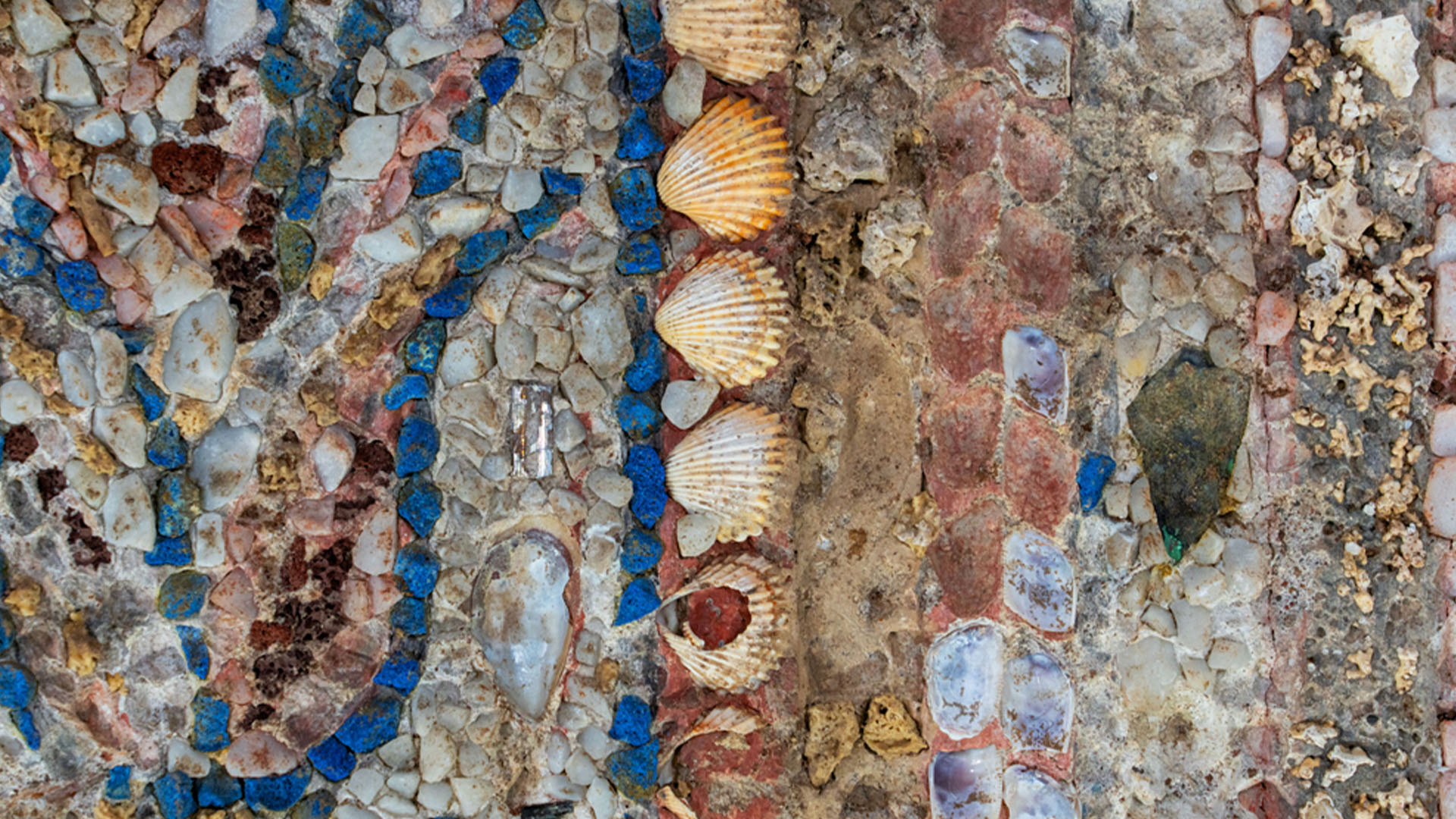
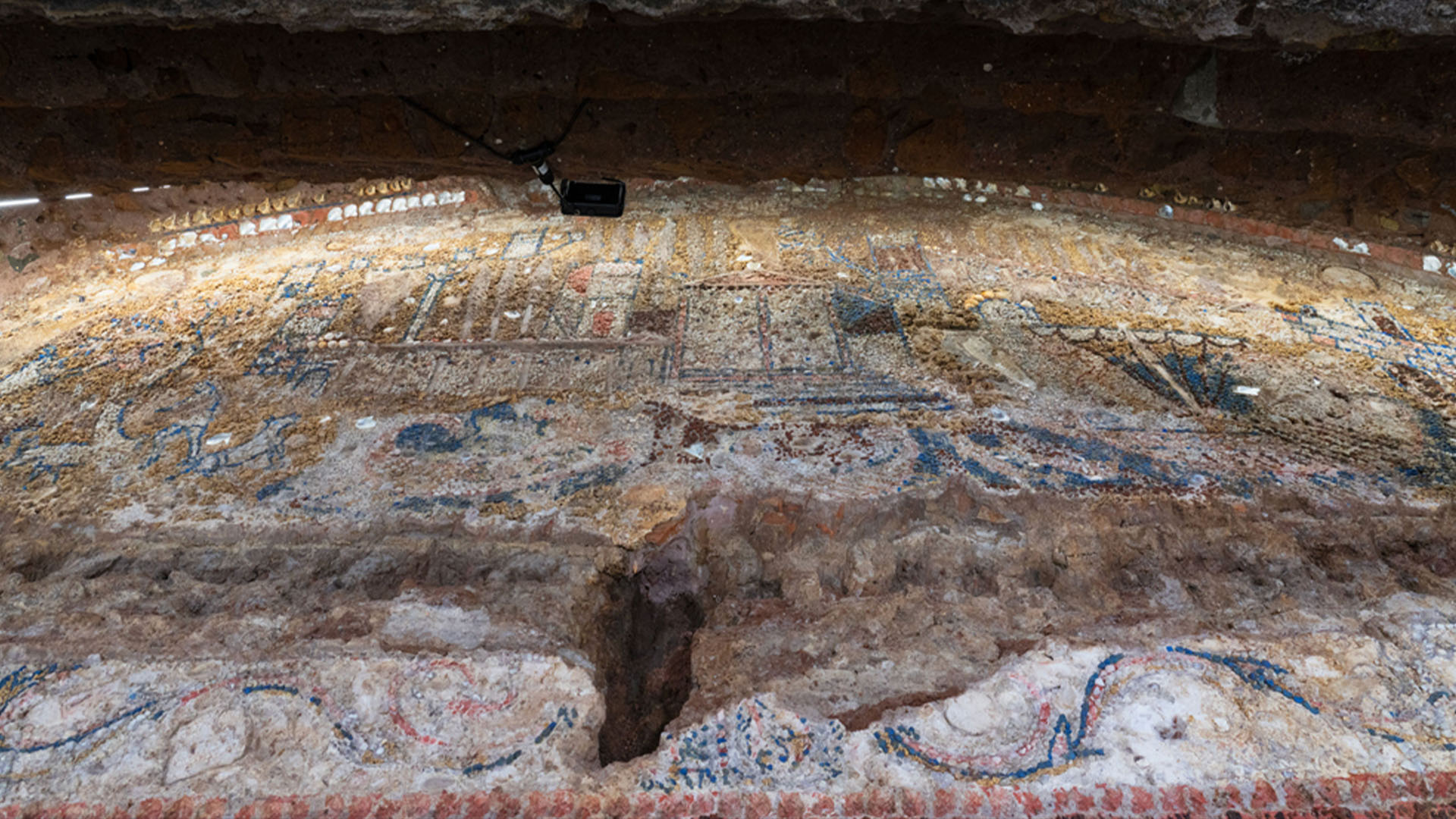
But archaeologists think the house — called a "domus" in Latin — dates from Rome's Late Republican period about 100 years earlier, when the northwestern part of the Palatine Hill was used for the residences of senatorial families, Russo said. (The Palatine was one of the "seven hills" of ancient Rome. The others were the Aventine, the Capitoline, the Caelian, the Esquiline, the Viminal and the Quirinal.)
The banquet hall is a "specus aestivus" — a room shaped to imitate a cave, according to the statement. It would have been used in the warm summer months to help residents stay cool and was fitted with lead pipes that carried water to create fountains.
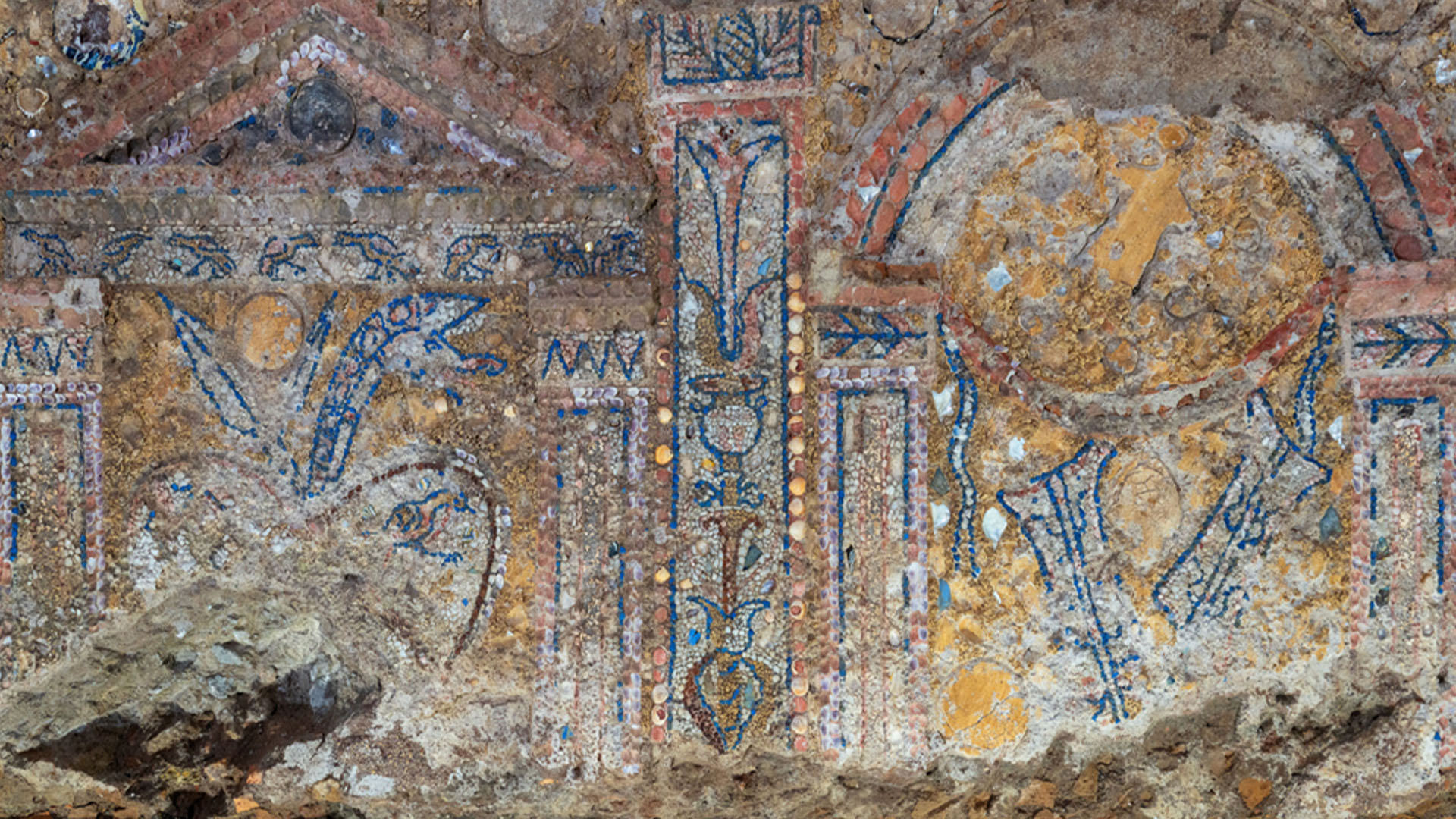
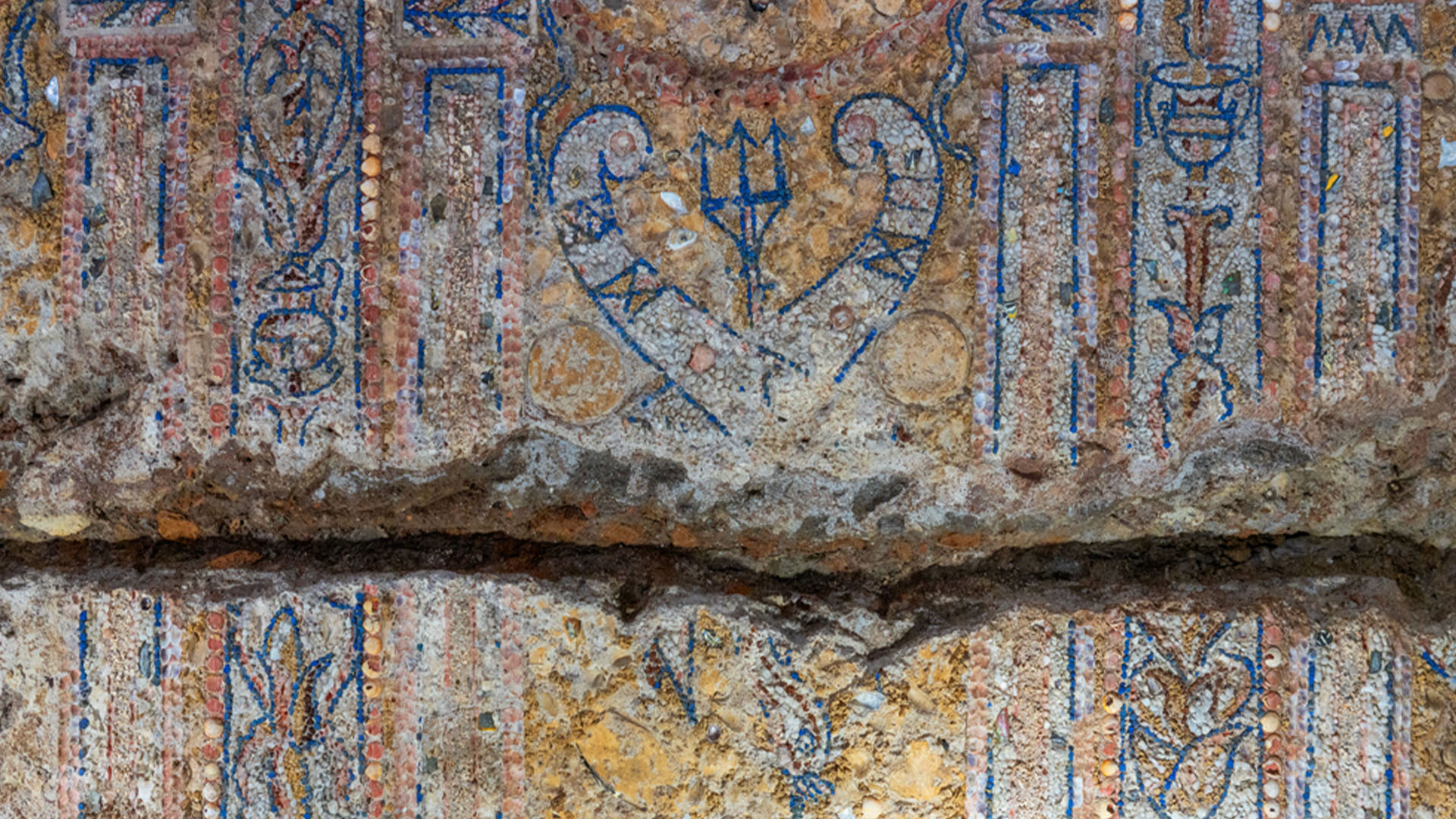
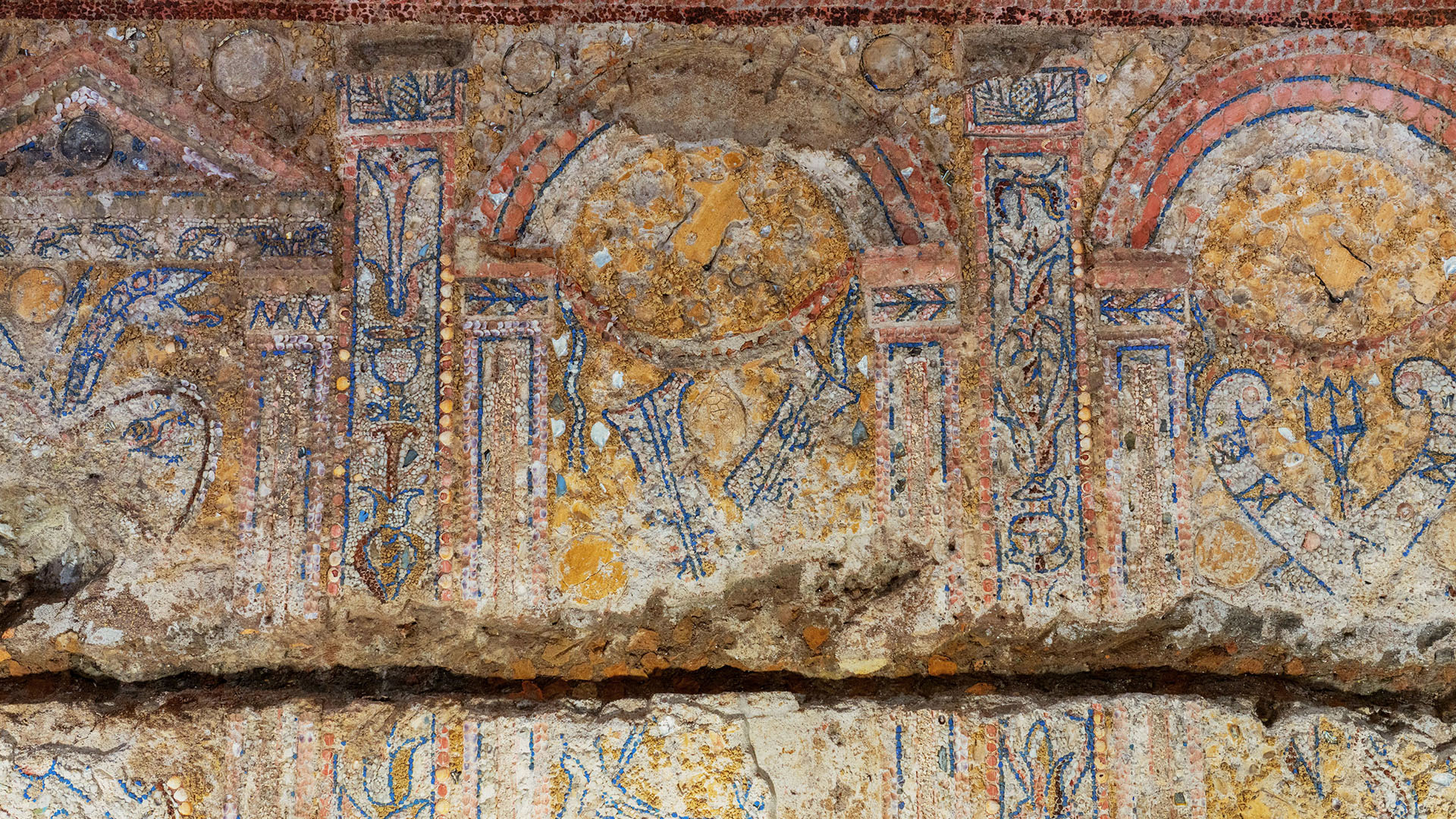
The mosaic covers the end wall. It is more than 16 feet (4.8 meters) long and decorated with depictions of vines, lotus leaves, weapons, trumpets, pastoral scenes, coastal landscapes and ships. Some of the images may allude to a double victory on land and sea by the owner of the domus, who was presumably a senator — both a politician and a military commander.
Ancient house
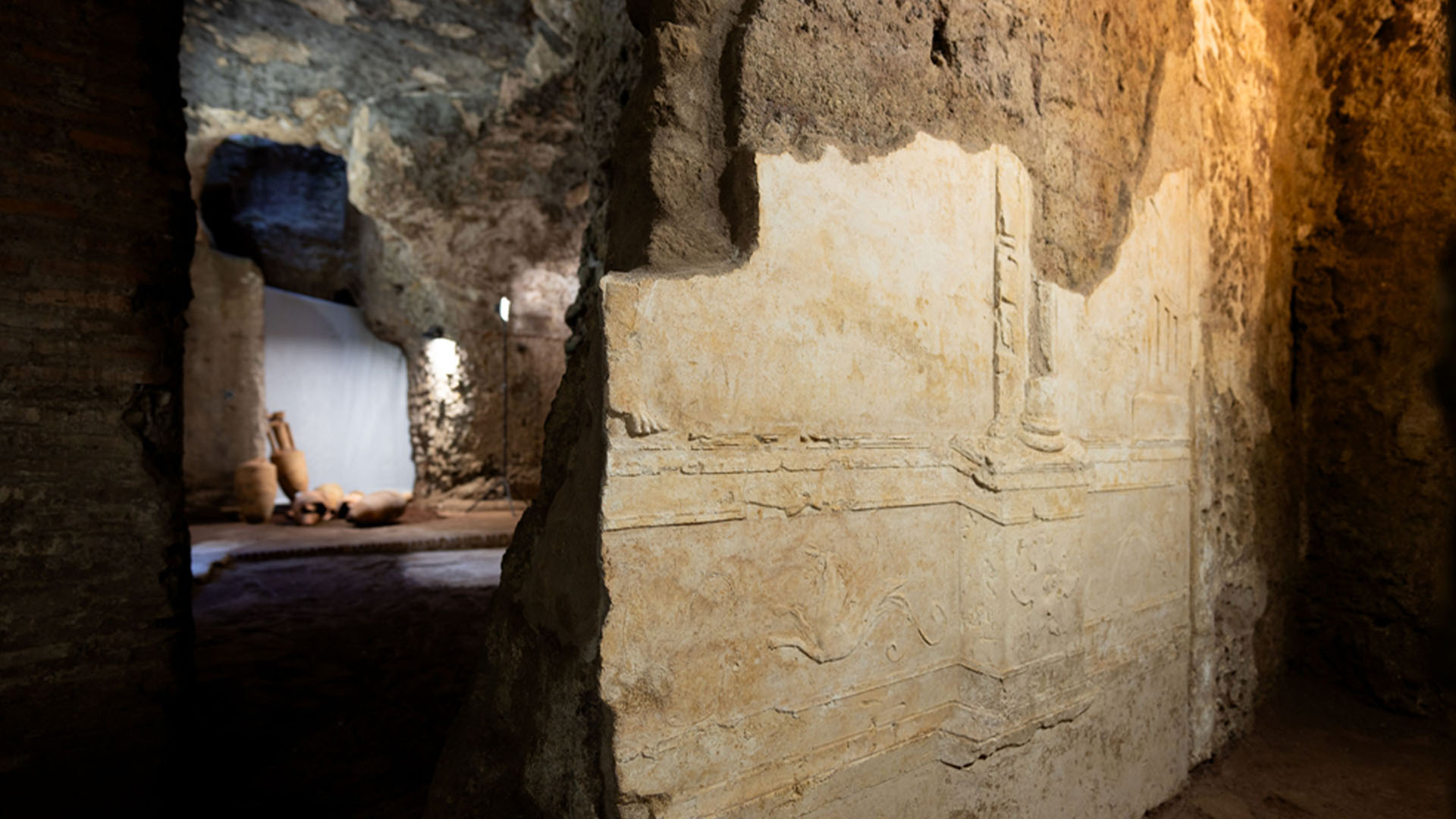
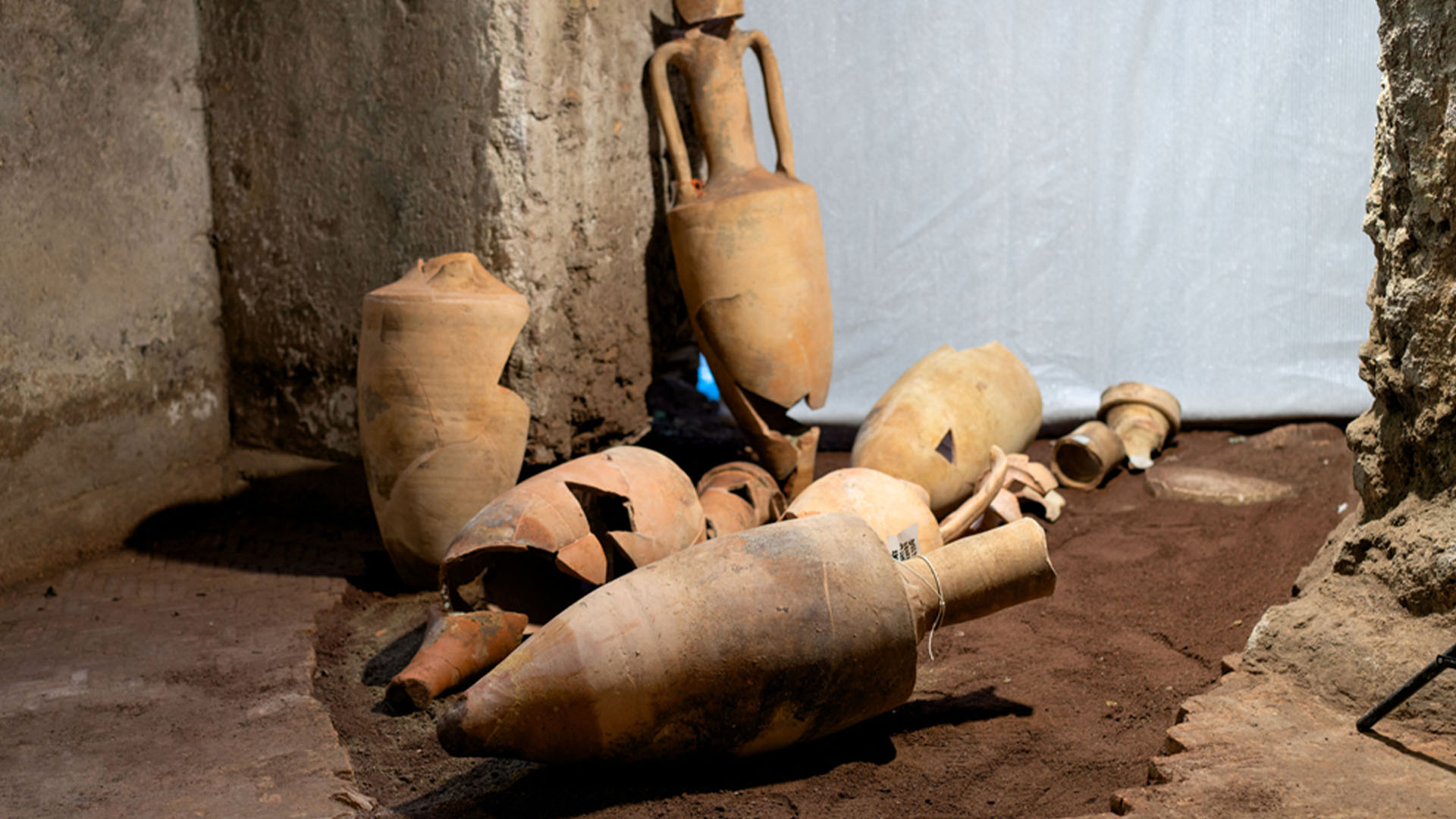
Some walls of the domus were first found in 2018. The archaeologists have now also unearthed an adjoining reception room covered in white stucco that was painted with landscapes, figures and decorative architectural elements.
The domus was spread over several floors, probably in terraces around a central atrium or garden; it seems to have been built in at least three phases, the oldest dating to the second half of the second century B.C. and the last dating to the end of the first century B.C , the statement said.
The earliest phase of the domus dates from a time when the Roman Republic was subject to a fierce political struggle between aristocratic factions, Russo added.







